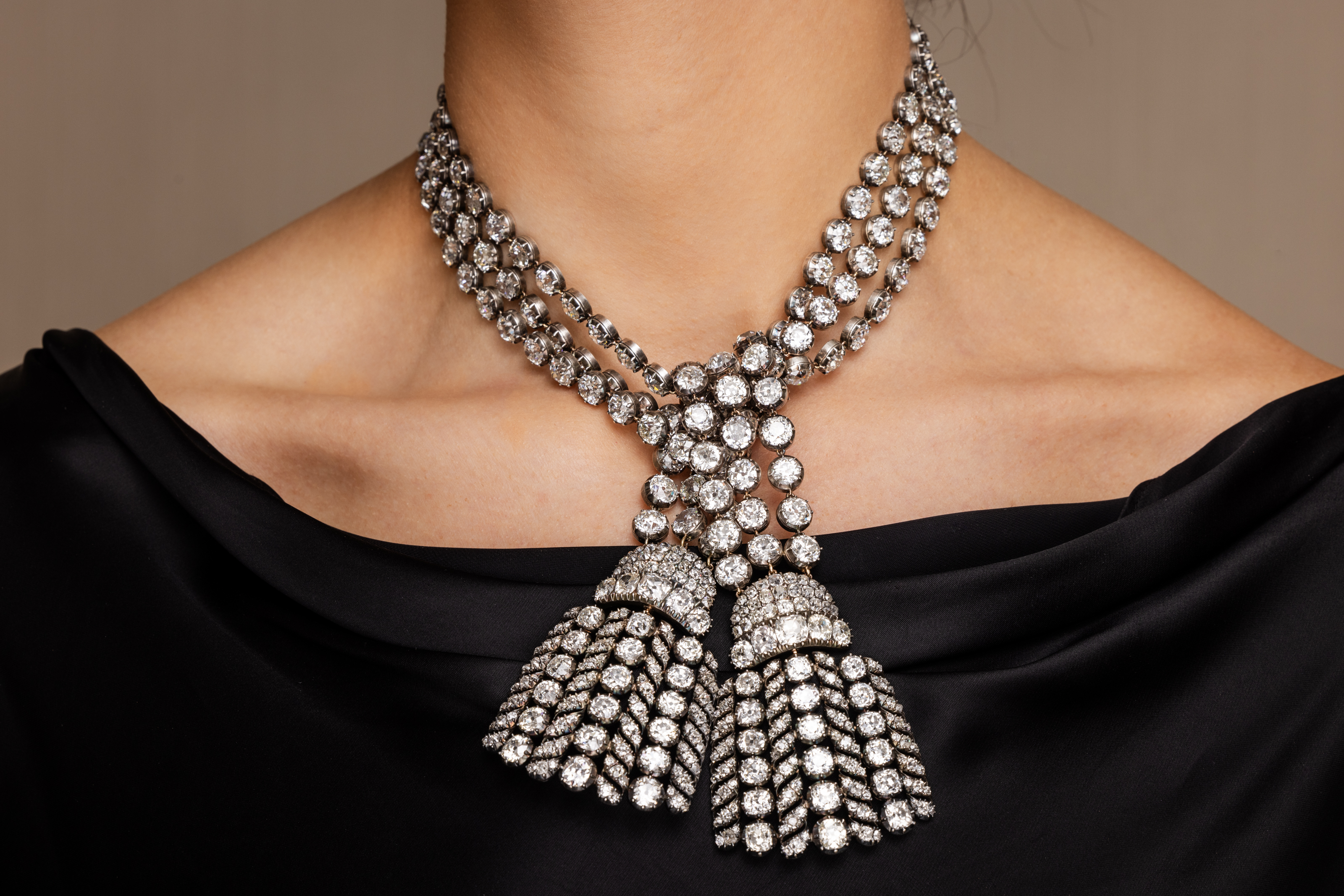Are lab-made diamonds “real?”
It’s a hot question.
On one side are people like Tom Chatham, the chairman of Chatham Created Gems & Diamonds, a wholesale business selling laboratory-created gems. Diamond is only carbon, and in the right conditions one can be created in four to six weeks, he said.
“The natural diamond industry doesn’t really like what we’re doing,” Chatham said. “And they have taken a lot of potshots at us. And we in turn have done the same to them.”
On the other is the natural diamond industry, represented by Natural Diamond Council CEO David Kellie, who argues that the stones are so different as to eliminate any comparison between the two. While chemically and structurally the two are the same, the Council maintains that the meaning and cache of a mined diamond far exceeds its lab-grown sibling. In the early days of lab-grown diamonds, there was competition but that has disappeared, he said.
“Now there is a very clear understanding that these are two very, very different products and markets,” he said. “Natural diamonds are always something that you can’t recreate because they come from the Earth.”

The Federal Trade Commission changed its definition of a diamond in 2018 to include both types, with an important caveat. Lab-created diamonds must be labeled as such.
U.S. & World
But many would contend that regardless of origin, diamonds are a luxury - though these days, the definition of luxury is not necessarily reliant on the price tag.
“A luxury purchase doesn’t have to be a huge, expensive indulgence,” said Lara Koslow of the Boston Consulting Group. "Trading up to little small indulgences or luxuries as a key experience for someone who wants a little taste of that luxury feeling and experience to enhance their everyday."
Koslow says luxury goods can range from expensive jewelry to small indulgences, like treating yourself to a Starbucks coffee or a scented candle. For Dallas-area candlemaker Brant Anderson, providing a luxury experience is key to his business branding. And like many in the business of growing gems in the lab, Anderson has prioritized providing a luxury product that also lessens the impact some luxuries have on the environment.

Selling luxury goods as environmentally friendly products can be tricky, notes a September 2021 article in the Harvard Business Review. In “Research: How to Position a Luxury Brand as Sustainable,” the authors write that some of the traditional methods of signaling a company is ethical and green such as using recycled materials might not work for luxury brands. Consumers could perceive eco-friendly goods as having less status, they write.
One strategy would be to focus on authenticity, they say.
And that would make the question about which diamonds are real even more important.
When laboratory-created diamonds entered the market, most customers of Forever Diamonds and More in San Jose, California assumed they were a synthetic alternative, said owner Jonathan Powell. That’s changing.
He’s selling five or six such diamonds a month, up from one or two a few years ago, as his customers learn about the process. At first those buyers were younger people, who were more likely to be focused on sustainability, but that is changing too, he said.
“Almost everybody that is interested in diamonds is interested in 'labs' in some form or fashion,” he said. That may be because lab-grown diamonds are typically 40-50% less expensive than their mined counterparts, or it could be because customers are learning more about the broader impact of retrieving diamonds from underground.
Traditional mining exacerbates political conflict in diamond-mining areas and leaves scars on the planet, visible from space, he said.
“Is it better that we get these stones and we don’t put huge holes in the Earth?” he asked. “I would say, ‘Yes.’”
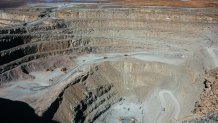
Diamond producers commonly use open pit mining to extract stones from underground. According to the International Gem Society, mining companies move 250 tons of earth and release 160kg of greenhouse gases per carat of diamond mined. These pits can be in operation for decades, leaving large pits large enough to be visible by satellite.
For diamonds mined from the ocean, the International Gem Society says it can take two to 10 years for ecosystems on the ocean floor to recover.
Also visible from space, a stream of mining waste released when a dam at a South African diamond mine collapsed in September, killing one person and injuring 40. The mud swamped an electricity substation, shutting down power, and affected drinking water, Reuters reported.
The mine had been owned by De Beers, one of the most recognizable names in diamonds, but had been sold in 2010 to a consortium.
The industry says it is working to restore former mines through closure plans agreed to by local governments and neighboring communities. The former Argyle Diamond Mine owned by Rio Tinto in western Australia, for example, will be reshaped and vegetation grown back. The Natural Diamond Council says for every mile of land used in diamond mining, three others are protected.
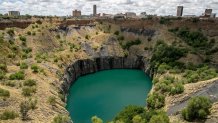
The natural diamond industry also argues that lab-created diamonds are energy intensive. Lightbox, a lab-grown diamond brand owned by diamond giant De Beers, claims that every carat of lab-grown stone takes 350 kWh to produce, or about the same energy required to manufacture three pairs of jeans.
But as important as the ecological efforts by industry, the Natural Diamond Council's Kellie says, is the human impact, particularly the more than 10 million people who make their livelihoods in the modern diamond industry. The council also cites $6.8 billion of benefits for mining communities, including schools and healthcare, and safety nets to ensure diamonds come from ethical practices.
But some customers can still have concerns over whether diamonds have been mined ethically and are “conflict-free,” meaning they do not come from conflict zones and have not been traded illegally to fund conflict. The “Kimberly Process” — named after Kimberly, South Africa — is a way to certify diamonds agreed to by the United Nations, European Union, the governments of 74 countries, the World Diamond Council and groups such as the environmental group, Global Witness. But Global Witness pulled out in 2011, arguing that the process was not successful.
Jewelers say growing diamonds removes ethical concerns from the buying process as there is no question of a stone's origin or environmental impact.
“With the lab counterpart, you eliminate that part because it’s guaranteed grown in a lab,” Powell said.
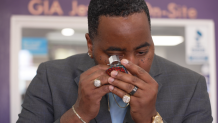
There are still obstacles to getting diamond buyers on board. In the United States, some 70% of consumers say they are worried about the environment, but for some that concern is only now beginning to influence their buying decisions, said Koslow of the Boston Consulting Group. Luxury consumers tend to be less hesitant in making the leap from expressing interest in sustainable products to actually making sustainable purchases.
In Dallas, Brant Anderson’s business selling luxury candles is less fraught with broader debates over sustainability but not without them. His eco-friendly Olphactory Candles feature 13 scents, ranging from floral to citrus and draw on such ingredients as Sicilian bergamot, vanilla and lavender. Each of his candles celebrates revered jazz musicians, which he hopes elevates the luxury experience for his customers.
Also key to the luxury experience are the materials he uses in each of his candles. Anderson said he chooses high-quality wicks to limit the amount of soot released and coconut wax, one of the most sustainable waxes.
“Coconuts are a very, very sustainable product. It is a very luxurious wax and it burns super smooth, super clean,” Anderson said. "Paraffin wax is like a petroleum sludge. That is not good for your inhalation."
But even here there are disagreements. Paraffin wax, a commonly used ingredient in candles, is made from fossil fuels. A 2014 study found that cancer-causing chemicals, including benzene and formaldehyde, were released by paraffin wax candles, though researchers also noted that it was unlikely that normal candle use would release enough to be harmful.
The National Candle Association says that candles made from petroleum products are as safe as candles made from other materials.
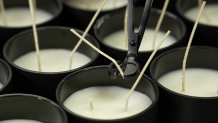
A report in 2020 in the scientific journal “Current Biology” looking at the environmental impacts of the coconut industry against the palm oil industry argued that deforestation caused by coconut oil production was harming animals in Southeast Asia. The coconut industry countered that the report’s lead author has ties to the competing palm oil industry. And the Rainforest Alliance told Reuters that because the palm industry is larger it is having more of an impact.
But for a luxury candlemaker such as Anderson, offering an alternative to petroleum-sourced wax is something he is proud to provide.
“These candles are relaxation in a glass,” Anderson said. “And I try to stay as natural as possible.”

